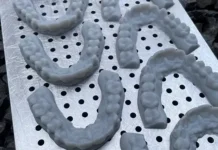The first edition of this column included a brief “Introduction to Polymer Science.”1 Polymeric materials were defined as those containing molecules of very large size and molecular mass. These “macromolecules” then were classified into three different categories: linear polymers, branched polymers and crosslinked polymers. Any given sample may contain mixtures of two or more of these, as well as low molecular mass materials. In this second edition, some of the key differences between the properties of polymers and those of other materials will be discussed.
Polymers vs. low molecular mass materials
What are the key properties that would differentiate polymers from other types of materials? How can these property differences be used to identify a polymer? What are some of the reasons for these differences?
Most people who studied chemistry at the university level spent the majority of their time studying the chemical and physical properties of relatively low molecular mass materials. They may or may not have gained insights into the unique properties of polymers. Clearly, one can see that items such as plastics, rubber-based materials, fibers, coatings, adhesives and other types of polymer-based materials behave very differently from low molecular mass compounds, elements and mixtures thereof. One would not likely mistake a polymeric material – such as polycarbonate (PC), polyvinyl chloride (PVC), a rubber band or a strand of nylon fiber – for a piece of steel, a sample of sulfur, a block of ice, a sample of liquid acetone or a powdered form of a transition metal complex. These low molecular mass or “monomolecular” materials are very different in their physical properties from those of polymer-based materials, and these differences are rather obvious. In what follows, we will discuss several key physical properties that demonstrate the differences one observes between macromolecular polymeric materials and monomolecular materials.
Melting temperature and Tg
In organic chemistry lab, one of the ways for testing the purity of low molecular mass organic compounds is to measure the melting temperature. Pure solids will have a sharp and distinct melting temperature, while a broad temperature range for melting would indicate that a mixture is present. Polymer-based materials, on the other hand – even if free of impurities – will normally have a broad temperature transition from the solid to the liquid state. This is a strong indication that polymers are almost always “mixtures” of macromolecules. Even if the polymer consists of a single chemical species, such as polyethylene (PE), it will most likely contain macromolecules with widely different molecular masses. It also may contain mixtures of linear and branched macromolecules. Note that crosslinked polymers, including all practical energycured polymers, cannot be melted. To do so would involve breaking covalent chemical bonds, thus constituting decomposition – a chemical, rather than physical, change.
The process of melting is a quite endothermic primary phase transition involving solid components changing to liquid. Many polymers also go through a much smaller endothermic secondary phase transition at a lower temperature. This is called the “glass transition,” or Tg, and involves “softening,” not liquification. It is the temperature range over which a “glassy” brittle material softens to a “rubbery” flexible material – a transition described by Stevens2 as occurring at the onset of segmental motions within the macromolecules. Most monomolecular materials are crystalline in the solid state and, therefore, do not exhibit a glass transition. The Tg is a property of amorphous solids; solids that have a disordered, noncrystalline structure at the molecular level. The presence of a measurable Tg, then, is another indication that a material is most likely polymeric.
Flexibility and compressibility
Low molecular mass materials in the solid state tend to be inflexible and brittle. Even in the liquid state, monomeric materials, such as water, are not easily compressed, indicating that the molecules sit very close to each other in the liquid state. This is illustrated by automotive brake fluid, which would not function effectively if the liquid could be compressed. By contrast, many polymers are quite flexible. This flexibility arises from the noncrystalline nature of amorphous polymers and the presence of significant “free volume.” This is volume within the sample that is between and among the molecules, constituting “empty space.”
Imagine a container filled with several layers of small spheres closely spaced in an organized fashion. This can represent a crystalline monomolecular material. It has a relatively small amount of free volume and, in this case, that volume is not accessible to the spheres because of their size and the fact that they are in direct contact with one another. Now imagine a bowl of spaghetti with a very random arrangement of the individual strands. This is a simplistic but useful model of a linear polymer. Because of the long chains, polymers are typically inhibited from fully organizing into highly ordered crystalline arrays. Segments of the chains are quite mobile and can move rather easily when a stress is applied. But even so, they must have “room to move,” and this is provided by the free volume present. Molecular chain length and the presence of free volume contribute to the flexibility observed in many polymers.
Temperature dependence of physical properties
In addition to flexibility, some of the physical properties of low molecular mass materials, such as surface hardness and brittleness, are relatively independent of temperature, while those of polymers may change significantly with a change in temperature. As temperature increases, the average kinetic energy of the molecules of a material increases. This increased energy of motion mostly is exhibited in rotations, vibrations and translations of the molecules. Lower molecular mass solids often are locked in tight crystalline structures, effectively restricting certain of these motions. On the other hand, the free volume within amorphous polymer solids allows for more molecular motions, producing a larger temperature dependence of the physical properties.
The nature of solutions
An important property of the liquid state, including that of liquid solutions, is the viscosity – the resistance of the material to flow. A higher resistance to flow corresponds to a higher viscosity. Therefore, a convenient way to measure viscosity involves using a rotating spindle within the solution. As the spindle is rotated, frictional forces shear the liquid and resist the spinning. The higher the viscosity, the stronger the resistance for a given rotational speed. Solutions of materials – such as sucrose table sugar or table salt – typically have the same viscosity, regardless of how fast or slow the spindle is moving. They are said to be “Newtonian fluids,” named for Sir Isaac Newton, an early investigator of viscosity.
Polymer solutions often are non-Newtonian, wherein the measured viscosity depends heavily on the speed of the spindle’s rotation. This dependency is due to the very large size of the molecules and their tendency toward molecular entanglement. Shearing such solutions may cause increased chain entanglements, increasing viscosity with shear rate. Or it may cause disentanglements, reducing the viscosity with increasing rate of the rotation. Note that for a polymer to be soluble, even in principle, it must be linear or branched. Just as with melting, crosslinked polymers cannot be dissolved. To do so would involve breaking covalent chemical bonds – a chemical change. This means energy-cured polymers cannot actually be dissolved. However, low molecular mass, or other noncrosslinked components of the polymer, may be soluble and extractable from the polymer sample. Many linear or branched polymers also are insoluble because of large amounts of chain entanglement or strong intermolecular forces of attraction, such as hydrogen bonding.
What’s next?
Having contrasted some of the key properties of low molecular mass materials from those of polymers, in the next edition of the “Professor’s Corner,” we will look further at structure/property relationships for polymers. We will also begin terminology clarification, seeking to improve communications within the field of energy curing.
Technical questions?
What are your technical questions about polymer science, photopolymerization or other topics concerning the chemistry and technology of UV/EB polymerization? Please submit your questions via email directly to Dianna Brodine, managing editor, UV+EB Technology at dianna@petersonpublications.com.
References
- “Professor’s Corner,” UV+EB Technology, 2019 Quarter 1, Vol 5, No. 1, p 5.
- Malcolm P. Stevens, Polymer Chemistry: An Introduction, 3rd ed., 1999, p. 70.
 Byron K. Christmas, Ph.D.
Byron K. Christmas, Ph.D.
Professor of Chemistry, Emeritus
University of Houston-Downtown
b4christmas@gmail.com





